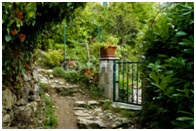A Coaching Model Created by Sarah O’Reilly
(Life Coach, AUSTRALIA)
My personal experience of sever Post Natal Depression has given me the passion to work with new mums and as my coaching journey continues to work with teenage girls.
When I look back over my life I see the patterns of lack of self-confidence, self-love and self-worth. I know that all of these bring forth the position I was in at that time when post-natal depression had me looking to end my life. The benefit of being a perfectionist in this case was that I was not sure I would do it properly so instead of attempting it and failing I would simply pray to God that I would not wake up in the morning. My real awakening to where I was exactly came when I wrote my 300 words about my recovery and how dark the dark days were. At that moment I realised that too many women suffered in silence not believing in themselves, having limited love for themselves, limited compassion and little or limited self-confidence.
Up to that point I was not clear that I really had anything to give even though I had been coaching for 12 months previously. At this moment I became so much more connect to my heart and it is where I stand with I get scared and fearful of the unknown.
Reflecting back on my personal experience and my coaching experience I am working with a model that is there and yet flexible for what the client requires.
I called this the Journey of Self-Worth through the meandering garden of life.
 Step one: The Garden Gate
Step one: The Garden Gate
Initial conversation with client to discover what they are looking for, how I can support them. If we are a good match and at that point of wanting to make a change we schedule the first session. This step identifies how committed they are to the change that they see that they need. Seeing how much pain are they in and are they willing to take.
 Step two: Opening the Garden Gate
Step two: Opening the Garden Gate
This is where they received all the documentation to commit to the coaching session and to themselves. I have a client set of client documents that start their coaching sessions:
Client Profile Document – helps them to see their Garden, what they want they are happy with, what they would like to change, who they have been and why they think things are the way they are. Within the Client Profile document they answer questions in relation to the NLP Representation system. As an NLP Practitioner it is helpful to know what is the best way to speak with them. Come onto the communication platform and have them know that they are being heard.
Client Coaching Agreement – So they can see what the expectations are and what they are responsible for.
Once these are filled out and returned they get their schedule of appointments so they know all their sessions in advance.
Step three: Stepping into the Garden
The coaching begins when the documents have been filled out and they have put thought and effort into their answers. The real fun, laughter, sadness and tears begin when they pick up the phone and engage in the coaching program.
As we take the first steps into the garden the client starts to see the garden for all that it is and all that it is not. Knowing that once inside the gate they are safe, empowered and supported they worth through all the moments of discovery. Obtaining agreement that the clients want to be in the garden is imperative to their breakthroughs and ability to shift their beliefs and past experiences and move into their new future.
Setting up the rules of the session and building rapport is essential for the client to feel safe and have the ability to be vulnerable.
 Step four: Garden Focus and future
Step four: Garden Focus and future
Each session has a focus in relation to a problem or challenge. With each of the focus areas, discovery of the problem and then visualizing how they want it the garden becomes clearer easier to move around and more manageable.
In this section of the garden we are in the discovery, why so and how would I like it to be part of the process.
Step five: Garden Measure
In this section of the process the client gets clear on what they want form the session. They measure where they are on a scale of one to 10 so there is a space to reference from to see how much the garden has changed with each session.
Step six: Garden Agreement
Having the client acknowledge that they are ready to make the changes in their session has their subconscious open the changes that they are wanting to make. It has to be a strong YES. Without that agreement the session could easily be a chit chat over coffee.
Learning from the client how import the change is to them and what difference it will make in their garden to have this change happen.
It is in this section that we use powerful questioning, chunking up and down questions and have the client be really present to what the change will mean in their life. As the coach I am listening for and identifying any limiting beliefs that has them stuck in the current path.
Coaching Models in use at this stage are Pain/Pleasure, Strategy elicitation, Be, Do, Have, Metaphors, Sharing insights and GROW model.
Step seven: Garden Beginnings
At this stage we stop and breathe for a minute and then look for the first time that this particular way of being first happened. Once this is discovered then we look at the event, give to the inner child what they need which could be understanding, love, affection or simply being in the space with the child. Once the child has all that the child needs the client send the child on her way. Was the client let’s the child go and comes back to the present
 Step eight: Garden treasures
Step eight: Garden treasures
At the end of the session having the client measure where they are after the session on a scale of 1 – 10 has them realises how far they have come. Shows them a reference for success and has them aware of how to get that feeling back when needed.
When the client states their breakthroughs/takeaways they are also present to a new way of thinking and it is anchored into the subconscious and conscious mind.
 Step nine: Garden planting
Step nine: Garden planting
Acknowledging the client for who they are feeds the plants and new planting that is in the garden.
Taking the client into the future 3 times has them live in that new space and that is planting new plants and it is nurtured by the subconscious mind.
Step ten:
The final step is to set the client’s a task that will cement in what has been discovered and turn it into part of their everyday thinking.
As the client walks down the garden path of their life they get to nurture some of the beliefs (plants) and clear out others. When they replant the new beliefs into their gardens they get to see how their lives (the gardens) grow, change and blossom.
As the coach we get to empower the client to see who they really are once they clear out all the limiting beliefs and replace them with things that empower them to be all that they are here to be.